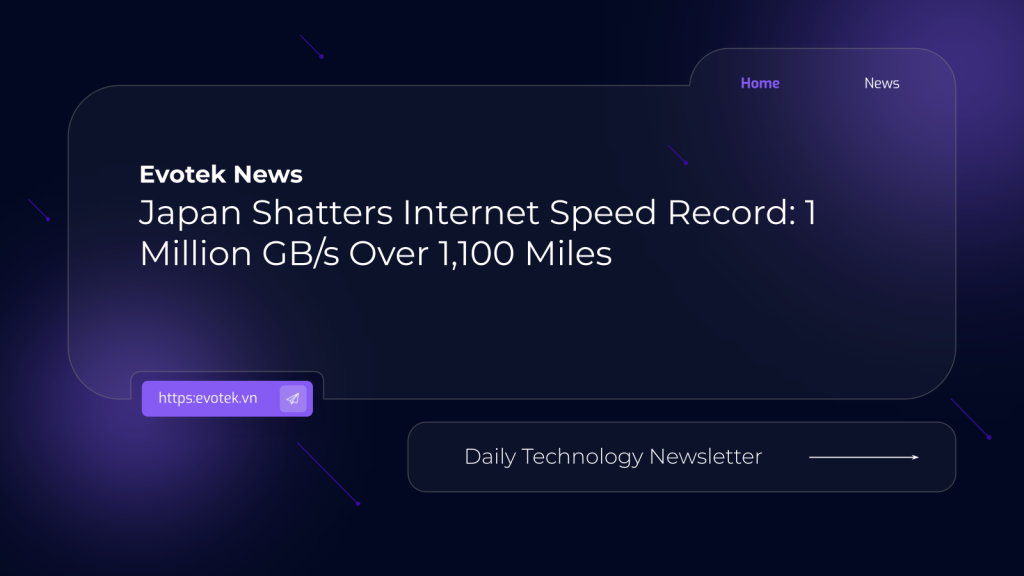Imagine a future where downloading massive files takes mere fractions of a second. Japanese researchers have made that future a giant leap closer to reality, achieving a groundbreaking internet speed of 1.02 petabits per second (that’s 1 million GB/s!) over a distance of 1,808 kilometers (approximately 1,118 miles). This remarkable feat promises to revolutionize data transmission and pave the way for bandwidth-hungry technologies like AI, VR, and the Internet of Things.
The Need for Speed: Overcoming Data Bottlenecks
As emerging technologies demand ever-increasing data transfer rates, existing infrastructure struggles to keep pace. This new development addresses this challenge head-on, offering a solution to the impending data traffic surge expected with the proliferation of AI, 6G networks, and the ever-expanding IoT landscape.
The Science Behind the Breakthrough
The secret to this unprecedented speed lies in a specially designed optical fiber. Researchers utilized a 19-core fiber, essentially creating a “superhighway” within a cable of standard dimensions (0.125 mm thick). Each core independently transmits data, multiplying the overall capacity.
Long-distance data transmission presents unique hurdles, primarily signal degradation. To combat this, the team developed a sophisticated amplification system that simultaneously boosts signals across all 19 cores within two different light bands (C-band and L-band) without causing interference.
The team simulated the 1,808-kilometer distance by circulating signals through 19 loops (one for each core) 21 times. A 19-channel receiver and a multi-input multi-output (MIMO) processor then cleaned and decoded the signals, achieving the record-breaking 1.02 petabits per second.
Implications for the Future
This achievement represents a significant advancement in optical fiber technology. While 19-core fibers have been tested before, this is the first time such a fiber has achieved such a high data rate over such a long distance. The groundbreaking research demonstrates the feasibility of building ultra-high-speed networks without altering the physical size of existing infrastructure, making deployment more practical and cost-effective.
As we move towards a future dominated by data-intensive applications like self-driving cars, AI assistants, and immersive VR experiences, this technology offers a pathway to building the robust communication networks necessary to support these innovations.
The research findings were presented at the Optical Fiber Communication Conference (OFC 2025).

 日本語
日本語 한국어
한국어 Tiếng Việt
Tiếng Việt 简体中文
简体中文